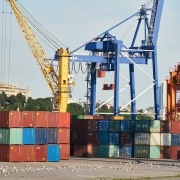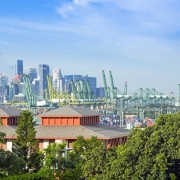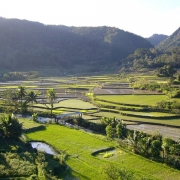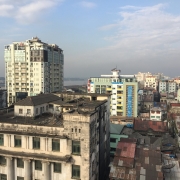How was Thailand affected by the Asian Financial Crisis?
Topic of Study [For H2 History Students]:
Paper 2: Economic Development after Independence
Section B: Essay Writing
Theme II Chapter 2: Asian Financial Crisis
Overview
The Asian Financial Crisis of 1997 was a devastating problem that impacted fast-growing economies in Southeast Asia. Before the crisis, the region was fuelled by unprecedented growth, as seen by the rise of the ‘Tiger economies’ like Singapore.
The epicentre: Thailand
With the Bank of Thailand (BOT) at the helm of the nation’s push for financial liberalisation from the 1980s to the early 1990s, few had expected the central bank to assume partial responsibility for the underlying problems.
Since the 1960s, the Thai baht was tied to the American dollar. This arrangement proved beneficial in accelerating the Thai government’s switch from import-substitution industrialisation (ISI) to export promotion. The establishment of export processing zones (EPZs) was carried out in tandem with the large capital inflows from newly industrialised economies, such as Taiwan.
Like a moth to a flame: Enter the BIBF
Furthermore, the BOT had accepted Article 8 of the International Monetary Fund (IMF) Agreement on 20 May 1990. It meant that BOT agreed to open the Thai economy to a larger degree of financial liberalisation. Notably, the Bangkok International Banking Facilities (BIBF) was formed in March 1993 as an offshore banking centre, turning the nation in to an investment hub that could compete with Singapore.
As a result of Thailand’s market-friendly measures, the economy gained from a tremendous amount of capital inflow.
In fact, between 1988 and 1996 Thailand was the recipient of the largest capital inflows relative to GDP in the world. According to the Bank of Thailand, between 1988 and 1996 Thailand received a staggering cumulative amount of US$100.3 billion, about 55 per cent of 1996 GDP, or 9.4 per cent of GDP on average per annum.
An excerpt from “The Asian Financial Crisis: Crisis, reform and recovery” by Shalendra Sharma.
An impending disaster
However, excessive capital inflow proved to be more detrimental than beneficial for Thailand. In particular, the influx of short-term capital, also known as ‘hot money‘, have debilitating effects on the economy, such as a widening current account deficit and an appreciation of the real exchange rate.
Although capital control measures were introduced on 8 August 1995, such responses proved futile. By mid-1997, Thailand’s external debt stood at US$94 billion. Its current account deficit was nearly 8.5% of the Gross Domestic Product (GDP).
In anticipation of the Thai government’s inability to finance their ever-growing foreign debt, foreign investors brought their money out of the nation. On 10 May 1996, the Bangkok Bank of Commerce (BBC) collapsed, causing widespread panic in the financial market. In December 1996, more than 50 percent of the companies listed on the Stock Exchange of Thailand (SET) declared falling earnings. On 5 February 1997, Somprasong Land Company defaulted.
On 5 February came the first Thai default, by the company Somprasong, on a foreign loan repayment. Later that month, it was announced that the largest of the finance companies, Finance One, was seeking a merger with a bank to stave off collapse. In the face of widespread fears of an impending financial implosion, Financial Minister Amnuay and central bank governor Rerngchai Marakanond suspended trading of financial sector shares on the stock exchange and went on national television to announce a series of emergency measures designed to reassure nervous markets.
An excerpt from “The Asian Financial Crisis and the Architecture of Global Finance” by Gregory W. Noble and John Ravenhill.
Although the Thai Prime Minister Chavalit Yongchaiyudh had claimed that the baht would never be allowed to devalue, a massive depreciation occurred on 2 July 1997. Subsequently, the Chavalit administration turned to the IMF for help.
What can we learn from this article?
Consider the following question:
– How far do you agree that the Asian Financial Crisis was inevitable?
Join our JC History Tuition and learn to answer essay questions on the Asian Financial Crisis. The H2 and H1 History Tuition feature online discussion and writing practices to enhance your knowledge application skills. Get useful study notes and clarify your doubts on the subject with the tutor. You can also follow our Telegram Channel to get useful updates.
We have other JC tuition classes, such as JC Math Tuition and JC Chemistry Tuition. For Secondary Tuition, we provide Secondary English Tuition, Secondary Math tuition, Secondary Chemistry Tuition, Social Studies Tuition, Geography, History Tuition and Secondary Economics Tuition. For Primary Tuition, we have Primary English, Math and Science Tuition. Call 9658 5789 to find out more.










